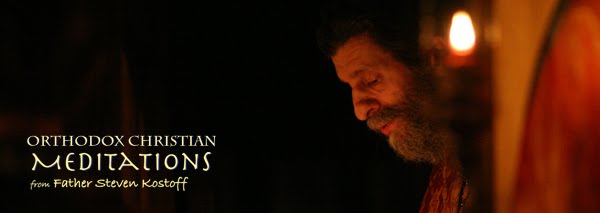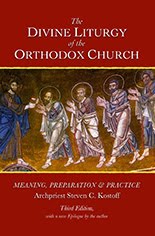Dear Parish Faithful & Friends in Christ,
CHRIST IS RISEN!
INDEED HE IS RISEN!
Among the Myrrhbearing Women, it is clear that Mary Magdalene is something of a "first among equals." In the Synoptic Gospels she is always listed first among the other women whose names are recorded by the Evangelists (MATT. 28:1: MK. 16:1; LK. 24:10). In the Gospel According to St. John, she is the only one of these remarkable women actually named by the Evangelist.
That St. John also knew the tradition of multiple women visiting the tomb of Christ "on the first day of the week" (JN. 20:1) is indicated by Mary Magdalene using "we" when returning from the tomb and excitingly telling the disciples what she/they discovered there, mistaken though she was as to the reason: "They have taken the Lord out of the tomb, and we do not know here they have laid him" (JN. 20:2).
And it is St. Mark and St. John who record the fact that she is the first of the women to actually see the Risen Lord (MK. 16:9: JN. 20:14). In addition, it is the Evangelist Mark who informs us that Jesus had "cast out seven demons" from Mary Magdalene (v. 9).
St. Mary Magdalene thus stands out among these outstanding, though self-effacing women, who are now known throughout the world wherever the Gospel is proclaimed. The Myrrhbearing Women were privileged to be the first human beings to discover the empty tomb, and the first as a body to behold the Risen Christ (MATT. 28:9).
This coming Sunday we will hear the account in St. Mark's Gospel about the role of the Myrrhbearing Women in the discovery of the empty tomb as we commemorate the Myrrhbearers on the Third Sunday of Pascha (MK. 15:43-16:8). This is the only Sunday during the paschal season that we hear from a Gospel other than St. John's.
However, I would like to return to St. John's Gospel for the purpose of this meditation and share a few words about the extraordinary encounter between the Risen Lord and Mary Magdalene recorded there (20:11-18). This is an encounter like no other. I recall the renowned British biblical scholar C. H. Dodd writing that this account in St. John's Gospel has no remote counterpart in all of the ancient literature of the Graeco-Roman world. It is absolutely unique.
At first, as recorded above, Mary Magdalene believed that the tomb was empty because "they have taken the Lord out of the tomb" (20:2). This was her "natural" reaction to the fact of the empty tomb. She then temporarily disappears from the narrative as we hear of Sts. Peter and John discovering the empty tomb, prompted by her troubling words. But after this discovery "the disciples went back to their home" (v. 17). Then, Mary appears again "weeping outside the tomb" (v. 11). When she stoops to look into the tomb she is surprised by the presence of two angels, who pointedly ask her, "Woman, why are you weeping?" She again repeats her despairing belief that "they have taken away my Lord" (v.13). At this point "she turned around and saw Jesus standing, but she did not know that it was Jesus" (v. 14).
And then that remarkable dialogue and encounter occurs.
At first Jesus will repeat the words of the angels: "Woman, why are you weeping? Whom do you seek?" (v.15) Still fixated on the mistaken belief that someone has removed the body of Jesus, Mary, for the third time repeats that assertion to "the gardener" hoping that he will cooperate in disclosing the whereabouts of the body of Jesus.
And then all is transformed "in the twinkling of an eye" when the Risen Jesus pronounces her name: "Mary" (v. 16). That is all that was necessary, and Christ prepared us for that immediate recognition upon hearing one's name pronounced:
"I am the good shepherd; I know my own and my own know me, as the Father knows me and I know the Father ... "My sheep hear my voice, and I know them, and they follow me; and I give them eternal life, and they shall never perish, and no one shall snatch them out of my hand." (JN. 10:14, 27-28)
When the Risen Good Shepherd speaks her name she immediately recognizes His voice as foretold in the words above and she responds with the endearing title: "Rab-bo'ni!" (The evangelist parenthetically informs us that this means Teacher).
This encounter like no other is actually consummated through the seemingly simple pronouncement of a name and a title exchanged with both love and devotion between Christ and His disciple Mary Magdalene. I believe that this moment of recognition would be impossible to express in words. We can only bow our heads in silence and awe. Or, perhaps like the other Myrrhbearing Women, "trembling and astonishment" (MK. 16:8) will come upon us if we allow the full power of this encounter to enter our minds and hearts.
For Mary, bewilderment, despair and confusion give way to joy and regeneration. That the setting was a "garden" is no accident. Now, upon returning to the other disciples for a second time, a new message is delivered to them, for St. John tells us: "Mary Magdalene went and said to the disciples, 'I have seen the Lord'" (v. 18).
At one point in this incredibly momentous morning, Mary Magdalene told the angels that "they have taken away my Lord." St. Thomas said when also coming to recognition of the Risen Lord: "My Lord and my God!" In these words, both of these saints made it very personal.
The encounter with Christ, regardless of the circumstances is always something deeply personal. Each unique human being has a unique relationship with Christ. We say that He is our Lord, but we equally say that He is my Lord. Therefore, I would like to quote again the deeply encouraging words of Fr. Alexander Men who, when commenting on the events of JN. 20, wrote:
"Therefore today, on this Paschal day, let each of you, returning home, carry in his heart this joy and the thought that the Lord has appeared to me, too. He is risen for me, and speaks for me, and remains with me, and will forever be as my Lord, as my Savior, as my God. May the Lord protect you!"
A pious tradition has St. Mary Magdalene greeting the Roman emperor Tiberius with the words "Christ is Risen!" These words reverberate to this day with the glorious "good news" of life out of death.
















